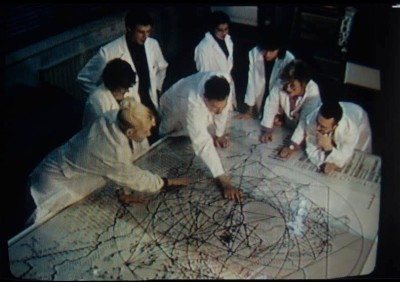
Builders, 1990 Photo: NK's archive
Builders was formed in 1985 in Ljubljana as the Neue Slowenische Kunst’s department of architecture and urban planning, on the premise of reconstructing Slovenian architecture. The members were Andreja Medvedič, Staša Zupančič, Aljoša Kolenc, Aleš Prijon, and Andraž Torkar. All were students at the Ljubljana Faculty of Architecture. Builders was active, intermittently, until 1992.

Builders, 1990 Photo: NK's archive
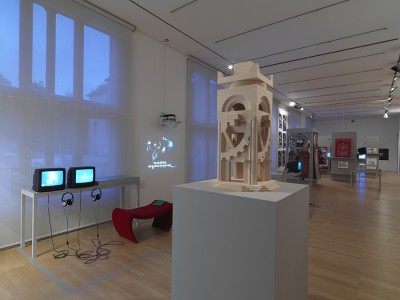
Ossuary for Slovenia, 1991, scale model – smoked pear, oak, brass
The group carried out the following projects:
– Renovation of the apartment of T. Lorenčič, 1985,
– Retro-building miniatures, 1986,
– Gesundes leben – Frohes schaffen, 1987,
– Ausstellungssaal der Ausstellung, 1987,
– Gradoustrojstvo, 1987,
– New in the Old: competition project, 1987,
– Fiat Haus, 1988,
– Set design for the film Silicon Horizon, 1988,
– Slovene Territory (a project on the colonisation of Slovenian soil) and Ossuary for Slovenia, 1991,
– project: furniture for the gallery Anonimus, 1992.
Builders employed aesthetics and elements from historical sources, particularly from totalitarian regimes in recent history. Their message was socially provocative, in the spirit of NSK.
The formal expression of Builders was based on retro-avant-garde principles, incorporating quotations and collages consisting of contemporary and historical forms and reworked symbols. Builders employed a specific language of architecture and urban planning, which had been used to establish the code of socially committed expression within the specific medium of architecture, and within the aesthetics of the NSK movement during the disintegration of authoritarian regimes at the end of the 1980s.
Builders’ ideological orientation is well-illustrated by the following quote from a manifesto it presented publicly on the steps of the National and University Library in Ljubljana in May 1985. In the name of the desubstantialisation of the stale ideology of patriotic Slovenianness, they read their manifesto in English:
What matters is not agreement or disagreement with what we love, with our faith, which is absolutely not the base of our ideas. It is not the question of creating truth where there is none. We are, however, strict and relentless if we see that foul blends with fair, friend associates with foe. This is why our method is the method of social totalitarian realism, incompatibly linked with unrealistic humanism, this strong relativism. Was it not Lenin who said that of all art, construction is the most important? “And the one most accessible to people,” added Stalin.
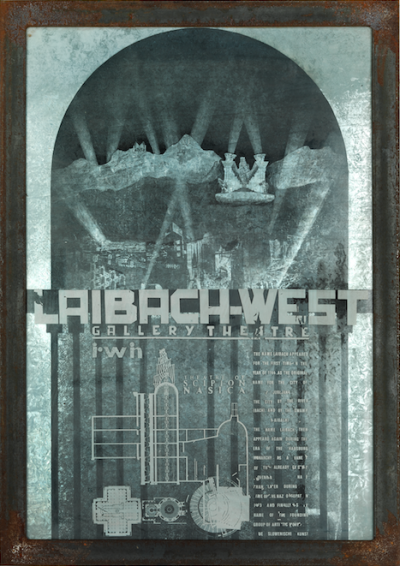
Map of Four Entry Points to Ljubljana, 1987 silkscreen on metal and glass courtesy of Builders Ossuary for Slovenia, 1991 scale model – smoked pear, oak, brass
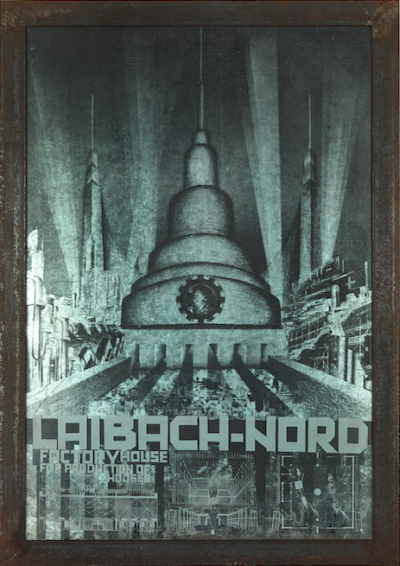
Map of Four Entry Points to Ljubljana, 1987 silkscreen on metal and glass courtesy of Builders Ossuary for Slovenia, 1991 scale model – smoked pear, oak, brass

Map of Four Entry Points to Ljubljana, 1987 silkscreen on metal and glass courtesy of Builders Ossuary for Slovenia, 1991 scale model – smoked pear, oak, brass
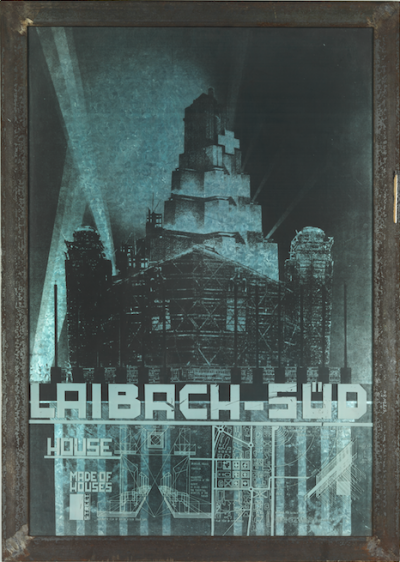
Map of Four Entry Points to Ljubljana, 1987 silkscreen on metal and glass courtesy of Builders Ossuary for Slovenia, 1991 scale model – smoked pear, oak, brass